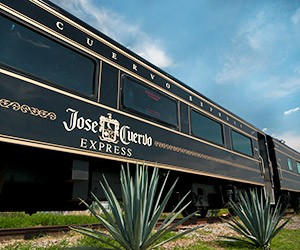From colonial towns to commercial centers, Mexico’s interior is a lively mix of art, culture and history, all exuding a true Mexican flavor.
While cities like Guadalajara, Merida and Mexico City offer their own entertainment, they are also jumping-off points for some of the country’s most popular excursions. Here are five that cater to groups.
Chichen-Itza
www.chichenitza.com
Named one of the New Seven Wonders of the World, Chichen-Itza reigns as one of Mexico’s premier archaeological sites and one of the country’s most alluring day trips.
The DMC Meeting Incentive Experts offers full-day excursions for groups from Merida and other Yucatan locales.
“What we do to make it a full VIP experience is provide luxury transport, a professional guide and a video about the history of the ruins prior to everyone arriving,” says Amanda Nemeth, president of the DMC. “When we get to the site, the guide gives an overview of Mayan culture and what all the pyramids meant, and there is free time to explore the ruins.”
Following the tour, participants enjoy a gourmet lunch at a local restaurant.
Copper Canyon
www.coppercanyoninsider.com
Copper Canyon consists of six distinct canyons in the Sierra Tarahumara, located in the southwestern part of the state of Chihuahua.
Groups can explore Copper Canyon in a variety of ways, but the most popular mode of transport is by train, as the Ferrocarril Chihuahua al Pacifico, also known as El ChePe, runs between the city of Chihuahua and Los Mochis on the Gulf of California.
“The train goes through the whole canyon and has beautiful views,” says Beatriz Chenhalls-Falkenberg, president of the DMC Go Mexico Groups & Incentives.
Go Mexico offers a complete package, including flights, official guides and an overnight in Chihuahua. The train ride takes more than 12 hours, prompting the DMC to suggest groups make the journey with one or two overnights.
“Groups can do the trip with only the stops the train does, but we always try to convince people to stay overnight in those little villages for fantastic views and to see how the people live,” Chenhalls-Falkenberg says. “They can also get off and go day hiking.”
Mundo Cuervo
www.mundocuervo.com/english
Located in the center of the town of Tequila, Mundo Cuervo was created by Jose Cuervo, the oldest producer of tequila. The distillery plant and entire complex was designed to spread Mexican culture through experiencing the history and process of making tequila.
Tours start with a demonstration of agave cutting and continue with a cup of cantarito, a typical Mexican cocktail to be sipped during a video overview of the site and its history.
Tours also include a stop to see the ovens where the agave “pinas” are baked in the traditional style before proceeding to the actual distilling and then the aging of tequila.
Cuervo’s most exclusive tequila is located in the reserve room, where groups can learn the art of tequila tasting.
There is a train starting up this year that will run from Guadalajara and offer on-board tequila tasting.
Eden Mine
http://turismo.zacatecas.gob.mx
Chiefly known as a mining town for its rich deposits of silver and gold, Zacatecas offers the rare opportunity to tour an old mine. Eden Mine, dedicated to silver mining, first opened in 1586 and ceased operations in 1960.
The cable railway, or teleferico, runs an aerial tour on its 10-minute ride from the Cerro Del Grillo, or Grasshopper Hill, to Cerro de la Bufa, or Wind Hill. Eden Mine is located at the top of Cerro de la Bufa.
Once there, groups can take a train tour deep into the mine shaft. There is a club inside the mine that can accommodate events.
Valle de Guadalupe
www.wineriesinbaja.com
What Napa is to California, Valle de Guadalupe is to Baja California.
Today, Mexico’s largest wineries can be found in three regions located near the town of Ensenada: San Antonio de las Minas, the San Vicente Valley and the Santo Tomas Valley. Guadalupe Valley is located in San Antonio de las Minas.
The Guadalupe Valley brims with vineyards of every size, including the commercial vineyard L.A. Cetto Valle de Guadalupe.
Go Mexico can organize tours to Cetto and other wineries in the region.
“I would suggest two or three in a day,” Chenhalls-Falkenberg says.
There are also family-owned vineyards that run their own guest haciendas, B&B’s and restaurants.







